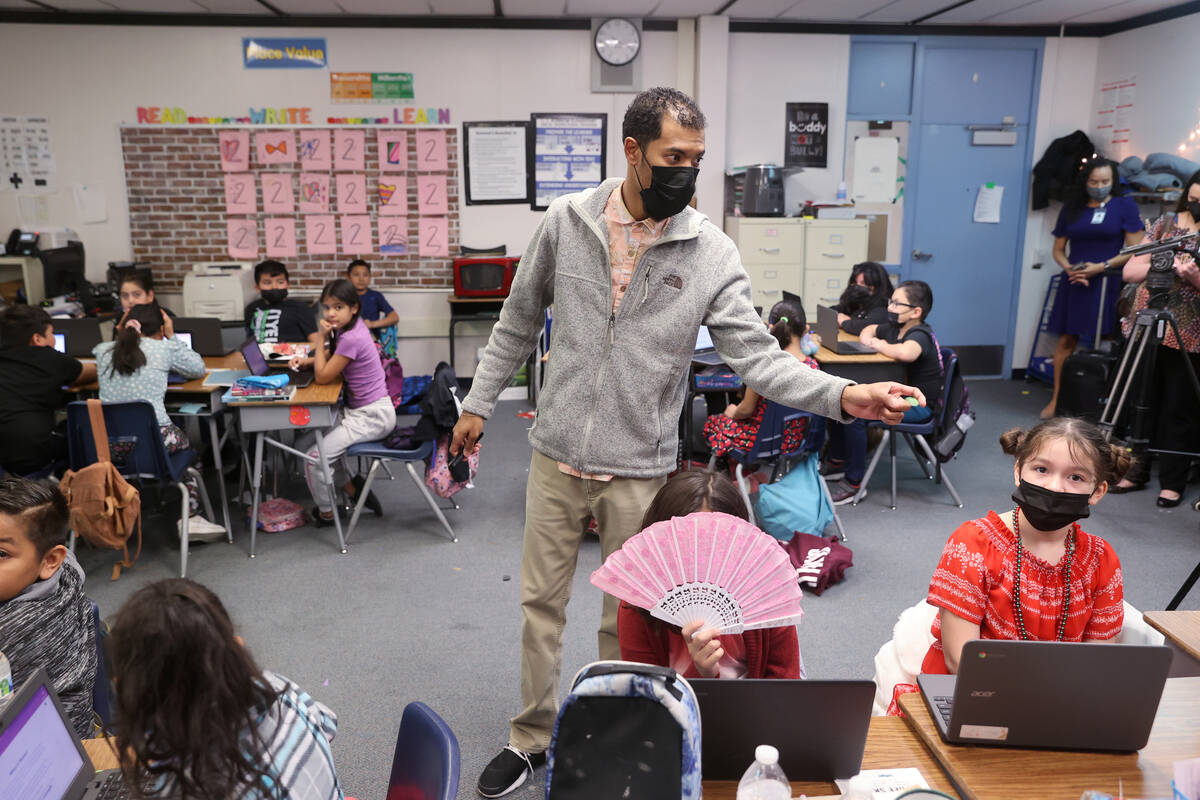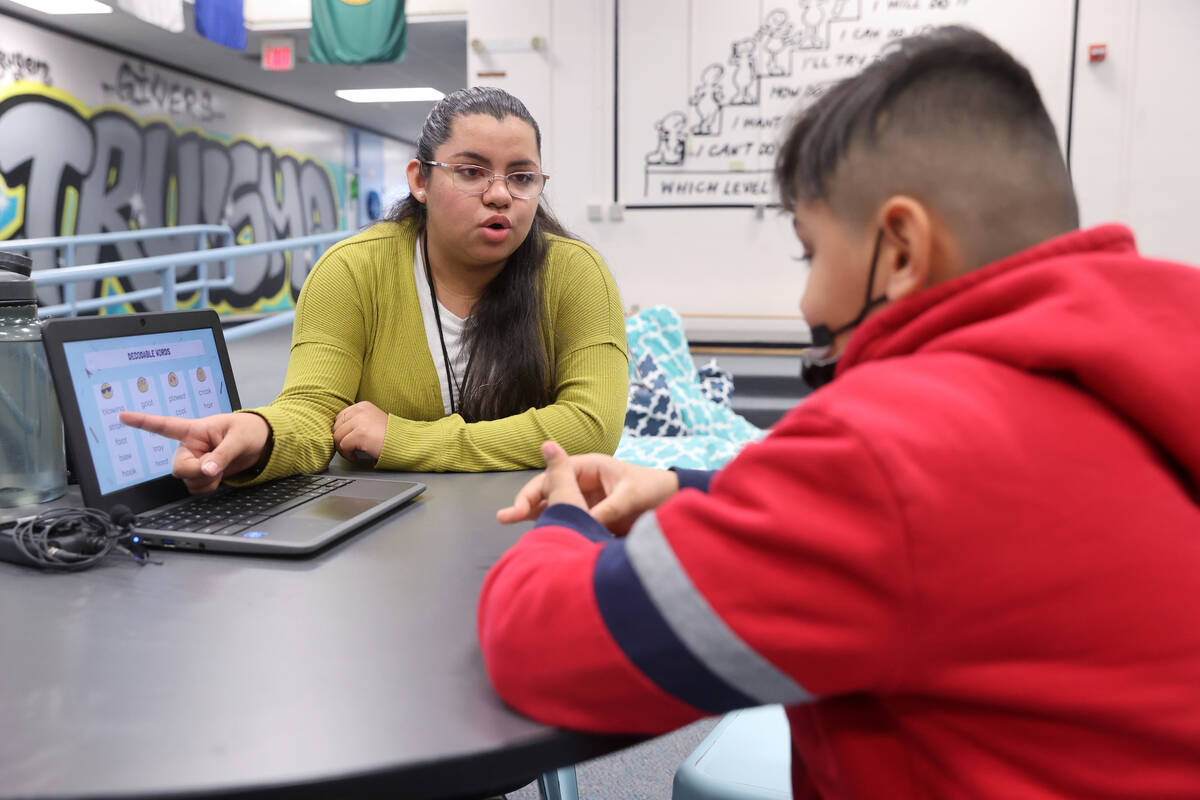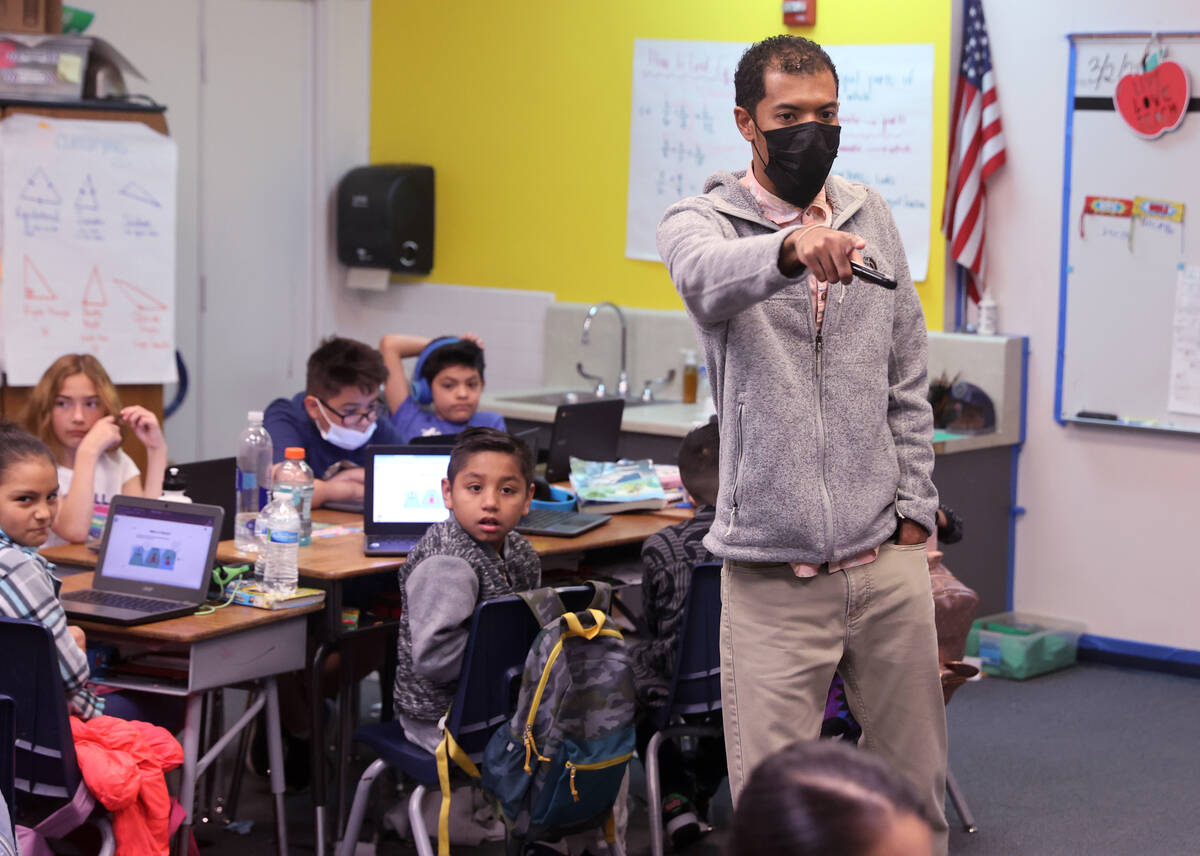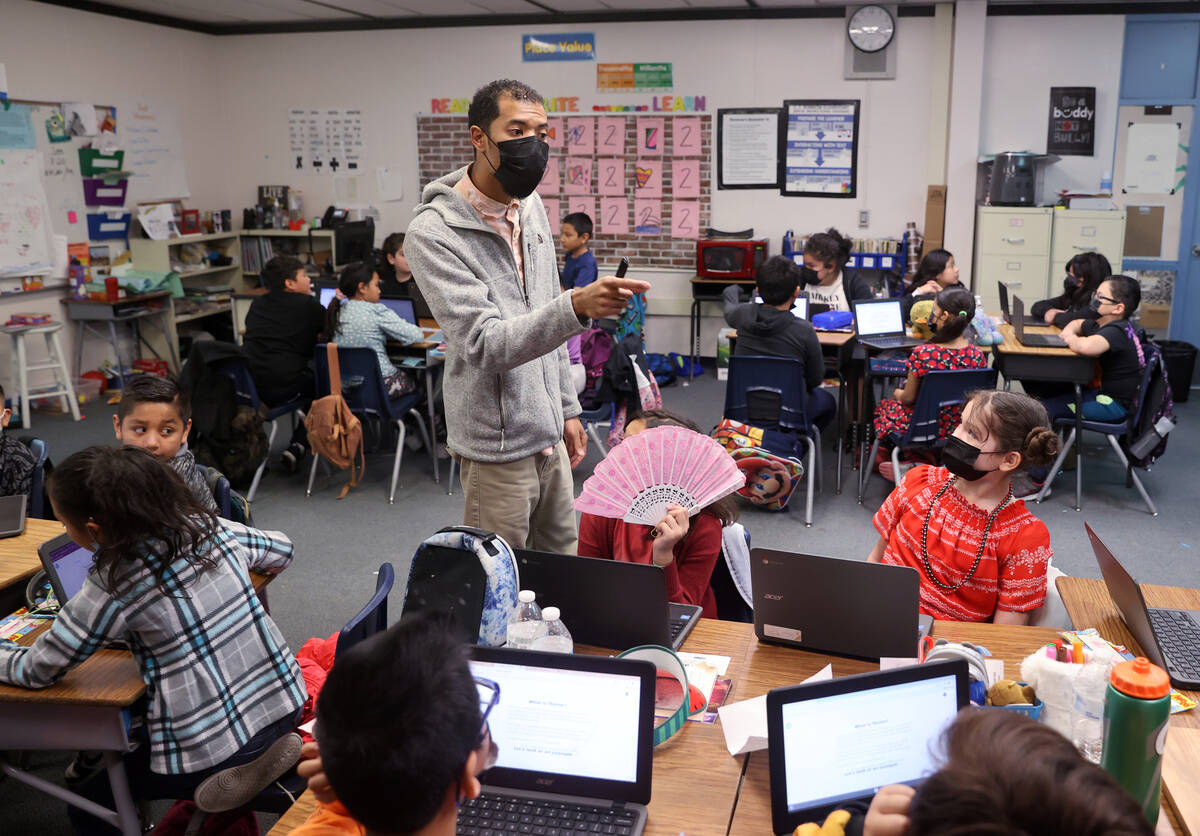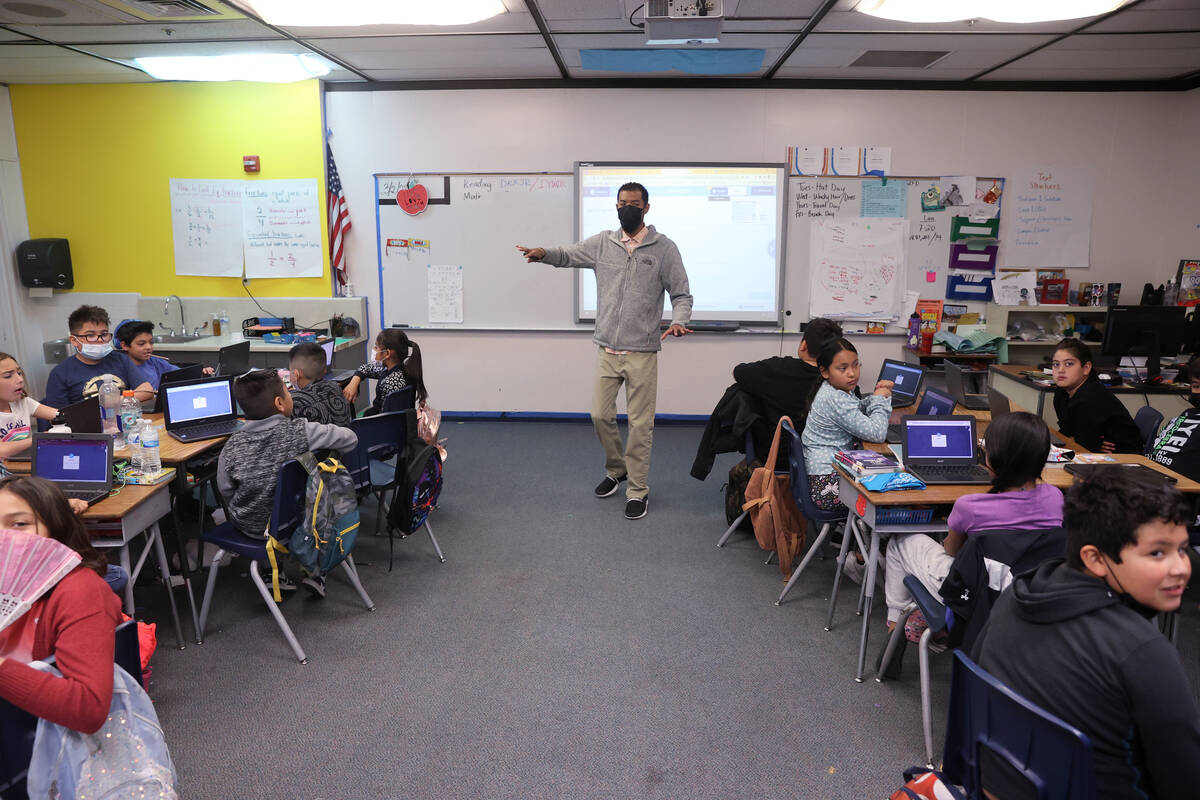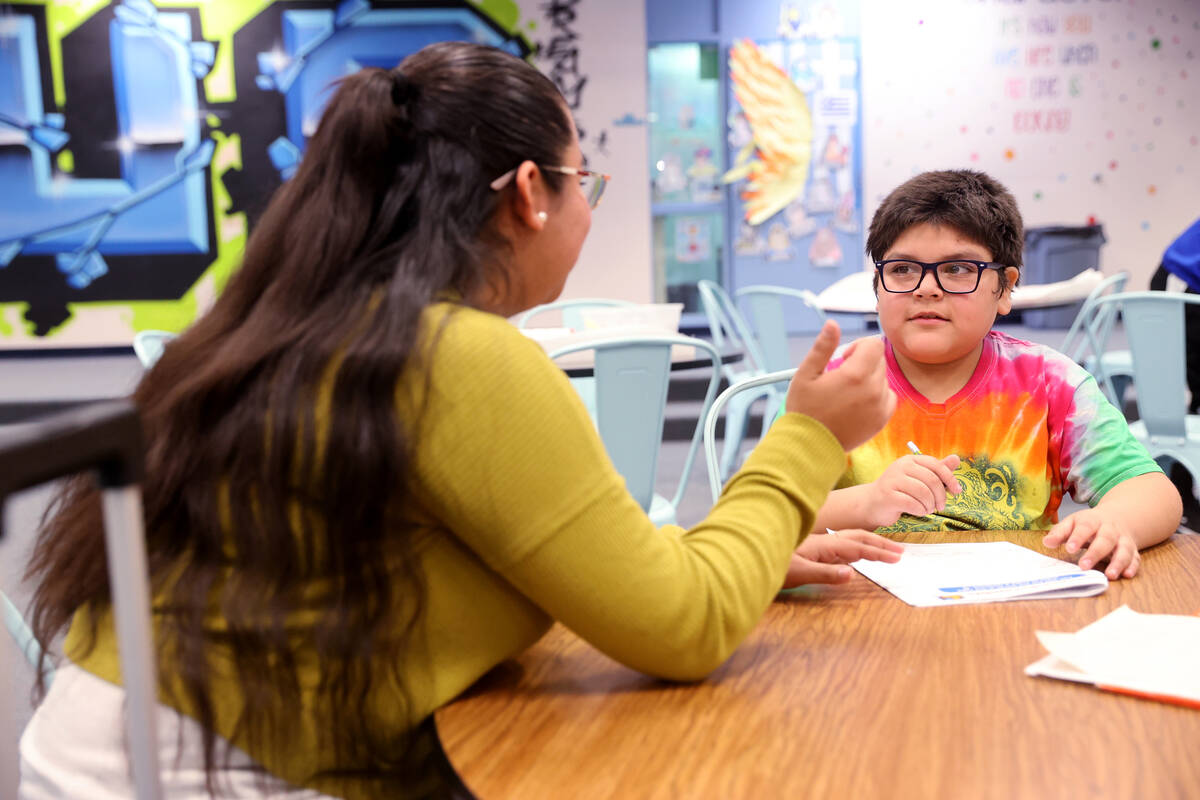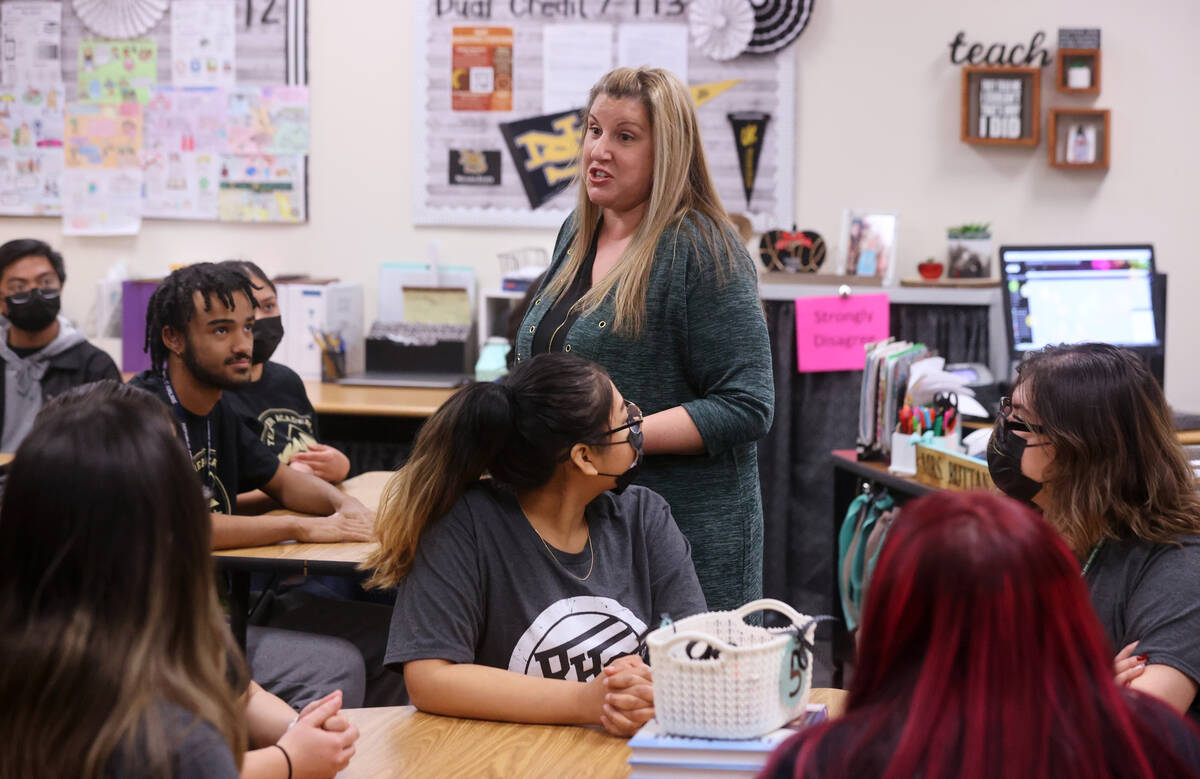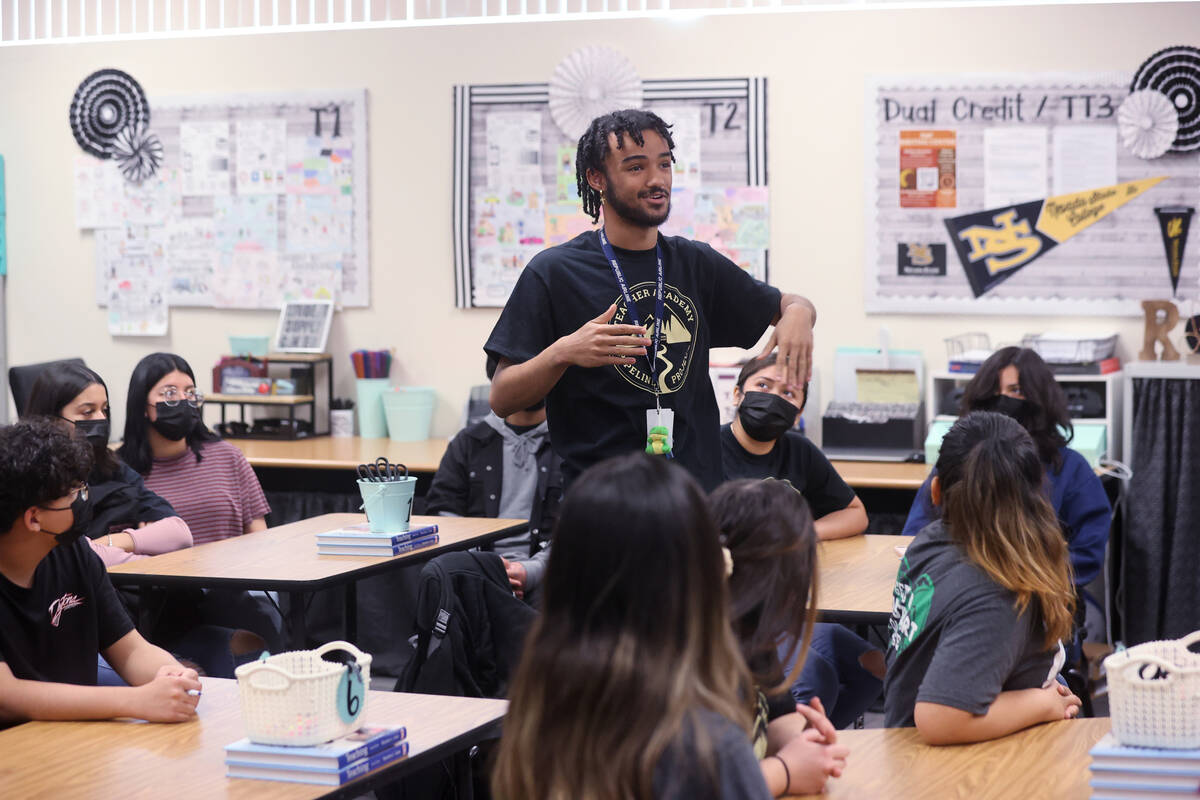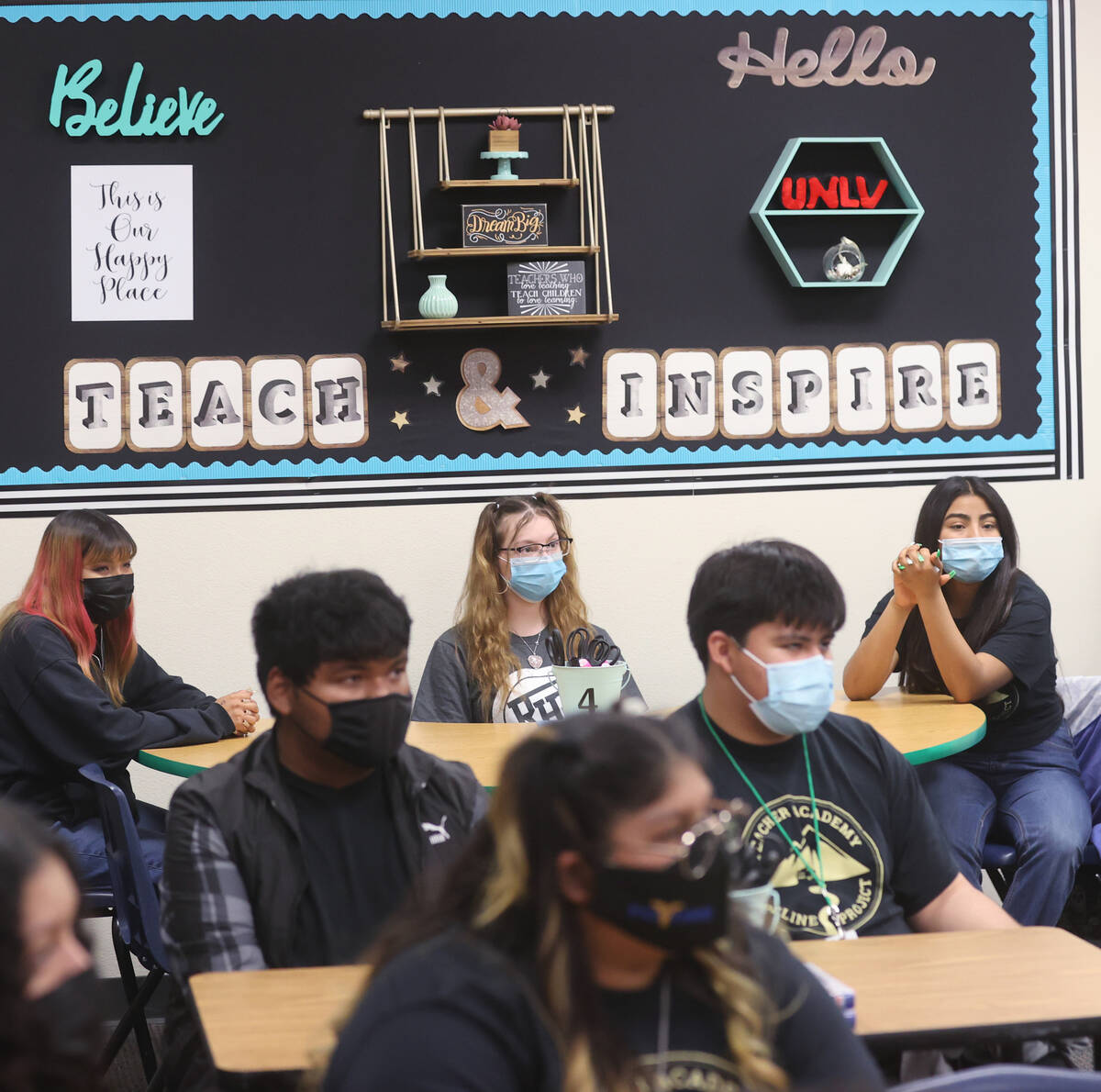CCSD announces new hiring campaign amid teacher shortage
The Clark County School District announced a new hiring campaign Thursday that comes amid a teacher shortage.
The district held two events for reporters at east Las Vegas schools to promote the launch of its When You Grow, We All Grow campaign.
It’s an effort to offer career advancement opportunities for current district employees, opportunities to earn a teaching license for those in the community who already have a bachelor’s degree and to provide a head start for high school students who are interested in pursuing an education career.
The campaign is focused on “hiring diverse, talented individuals committed to the success of every student,” the district said in a news release.
“We value our staff and their dedication to delivering excellence in education for our students,” Superintendent Jesus Jara said in the release.
The district will provide “upward career mobility opportunities” through the campaign “recognizing the vital role our staff plays in successful student outcomes and supporting them accordingly,” he said.
The nation’s fifth-largest school district — which has more than 300,000 students and 40,000 employees — is facing a teacher shortage, like many other districts across the country.
The district has seen a worsening shortage since school began in early August amid the COVID-19 pandemic. As of last week, the district had about 1,270 teacher vacancies and hundreds of support staff openings.
Employees have shown up to School Board meetings for months to voice concerns about working conditions, including large class sizes, a heavy workload, COVID-19 protocols, selling their prep periods and combining classes to cover for colleagues who are absent, discipline and behavior issues among students, and health insurance issues.
The district called a “five-day pause” in mid-January due to extreme staffing shortages spurred by an increase at the time in coronavirus case numbers.
The district’s new hiring campaign is a proactive, “holistic approach” to supporting current and future employees, said Steve Flak, director of recruitment for the school district.
He said that the campaign will use innovative approaches and the district is exploring additional partnerships with the Nevada System of Higher Education.
The campaign includes a few already-existing programs, including two offered by UNLV through a partnership with the school district: a paraprofessional pathways project and an accelerated alternate route to licensure program.
The alternate route program is for those who already have a bachelor’s degree in an area outside of education.
The paraprofessional pathways project — which launched in summer 2021 — helps support staff and instructional aides who are already working in schools become a licensed teacher in as little as a year.
The program, which covers the cost of tuition and fees, allows participants to complete student teaching while remaining in their current job.
Participants must have an associate degree or at least 60 college credits of relevant coursework. They can earn a bachelor’s degree in elementary education, special education or early childhood education.
The district also has a “teaching and training” career and technical education program for high school students who are interested in becoming an educator.
The district has 30 high schools with a teaching program and more than 4,000 students are enrolled in classes, according to the release.
Across the state, there are other efforts underway with the aim of alleviating the teacher shortage.
The Nevada Department of Education has a two-year, $20.7 million “Incentivizing Pathways to Teaching” grant program that offers tuition assistance and student teaching stipends to those in educator preparation programs.
And the state’s Legislative Commission gave final approval Monday to allow the state’s large school districts — including Clark County — and public charter schools within their boundaries the option of hiring emergency substitute teachers during a state of emergency who only have a high school diploma.
Growing future teachers
At Ronnow Elementary School, a school district event Thursday showcased a current employee who took an alternate path to become a teacher and a support professional who’s taking college education classes.
School Principal Michelee Cruz-Crawford was instrumental in pushing for Senate Bill 352, which passed during the state’s 2021 legislative session and was signed into law.
It allows a school paraprofessional to complete accelerated student teaching while keeping their current job.
Jerania Mancilla, a resource aide at Ronnow Elementary, is also taking classes at the College of Southern Nevada with the goal of becoming a licensed teacher.
On Thursday, she sat with student Johnny Cano Rivera in a common area with a laptop pointing out words on the screen.
As they practiced the “tl” sound — which Johnny repeated after her — Mancilla read a sentence to him: “This kitty is little.”
In a nearby fourth-grade classroom, teacher William Copeland IV had a comic on the classroom screen — the same one students also had open on their laptop computers — as students discussed the question, “What is the theme?”
Copeland IV already had a bachelor’s degree before going through an alternate route to licensure program, Cruz-Crawford said, also noting he’s a first-generation college graduate.
Each table of students discussed their ideas about the story’s theme.
“OK, over here, what did we come to?” Copeland IV asked one group of students. After hearing their explanation, he responded, “Boom. I like it.”
The second school district event Thursday was at Rancho High School, which showcased career and technical education students who want to become teachers.
Teacher Rachel Ruttan said the teacher shortage within the school district and across the country is a “major problem.”
If school programs can start getting students on that pathway, she said she believes it will help build the workforce.
At Rancho High, students in the program can earn high school and college credits simultaneously through a dual credit program with Nevada State College.
One of her students — senior Cristian McConathey, 18 — said he originally had zero interest in becoming a teacher.
But, he said, he has come to appreciate teaching and is now seriously considering it as a career option — likely, teaching either history or math — after spending all four years of high school in the program.
McConathey said he enjoys helping others. “I do like teaching things to people.”
This story has been updated to correct the spelling of McConathey’s name.
Contact Julie Wootton-Greener at jgreener@reviewjournal.com or 702-387-2921. Follow @julieswootton on Twitter.



